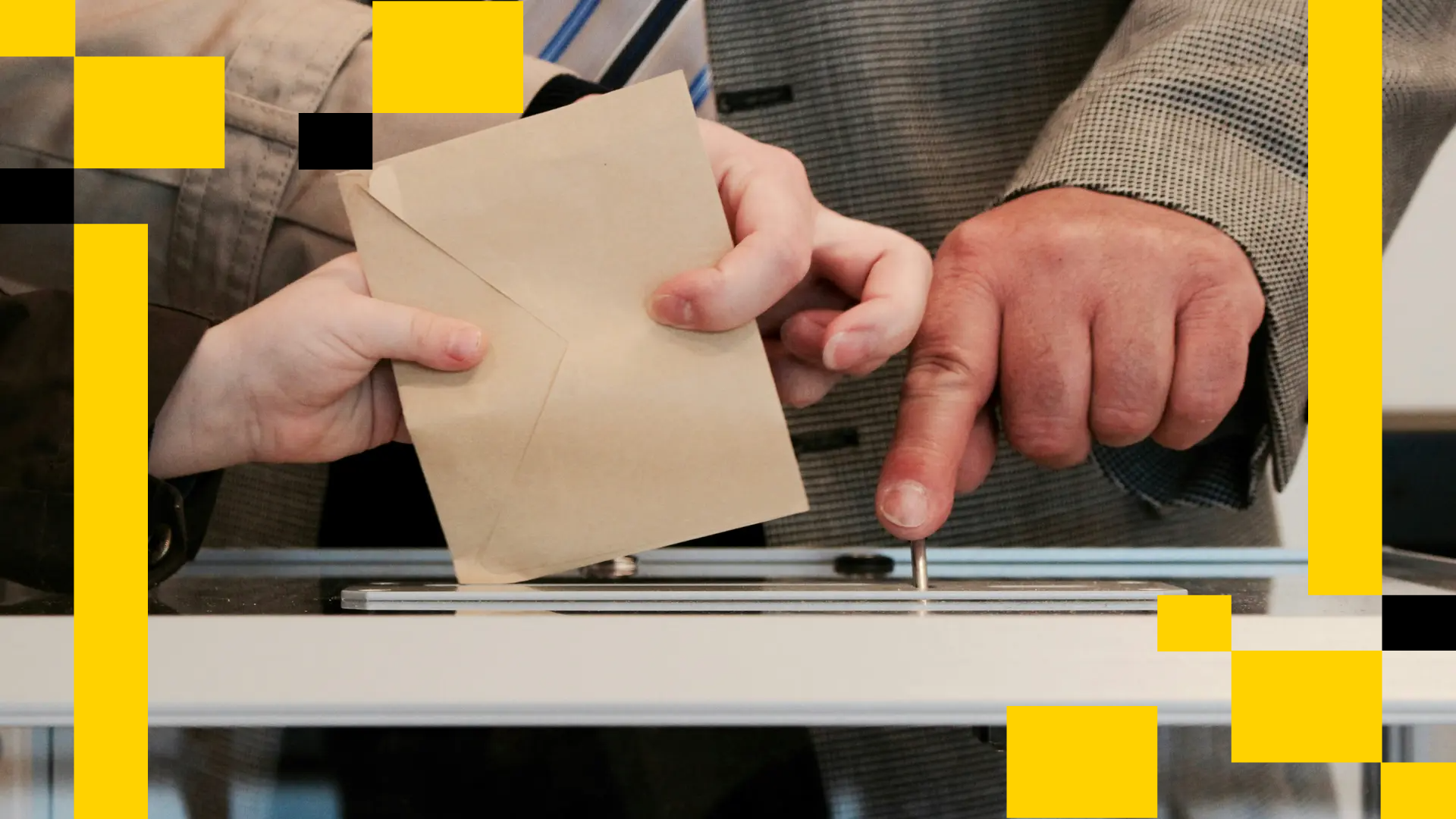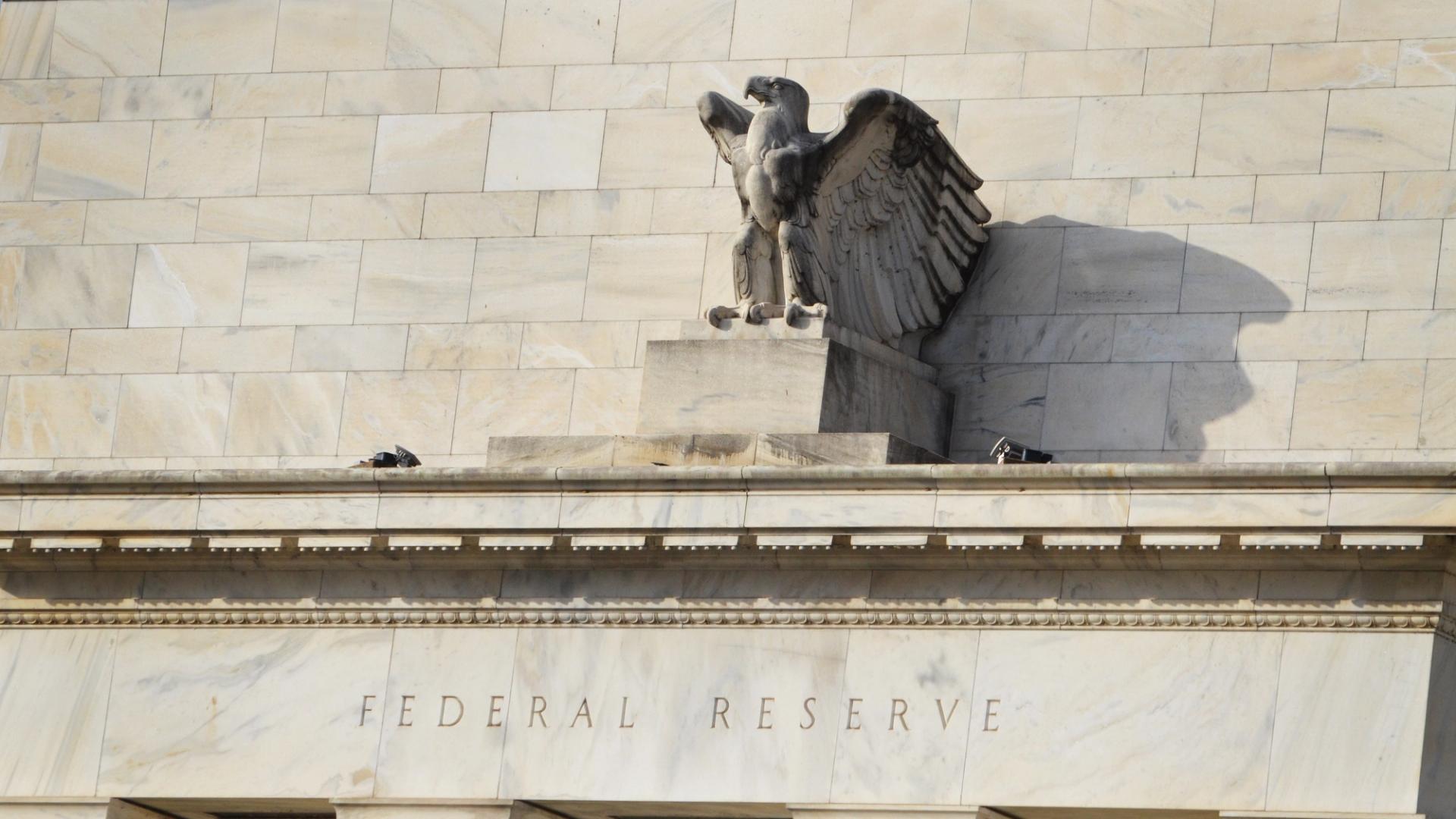Uncategorized
Telecom’s Future Lies in Decentralized Networks

The telecommunications industry stands at a critical juncture. As global data consumption skyrockets, traditional telecom operators face a perfect storm of challenges: stagnant subscriber growth, costly infrastructure maintenance and an insatiable demand for bandwidth. This capacity crunch is not just a problem for carriers; it’s a looming crisis for consumers who increasingly rely on seamless connectivity in their daily lives.
The telecom squeeze
In 2024, AT&T projected $4.7 billion in site lease costs. Add in Verizon and T-Mobile, and the annual cost of leases for wireless coverage in the US approaches a staggering $15 billion. As infrastructure costs rise, margins on internet access are projected to rise more slowly for telecom companies. Meanwhile, demand continues to explode, with global data consumption over telecom networks projected to grow by almost 2x by 2027.
The industry’s attempts to find new revenue streams, such as through fixed wireless access, which is used to connect home internet users via cellular connections, will exacerbate the problem by placing additional strain on cellular capacity. As a result, consumers face the prospect of degraded service and rising costs.
Enter the decentralized physical infrastructure network (DePIN) — a solution that promises to address the capacity dilemma head-on. In a decentralized model, infrastructure is owned, deployed and maintained by multiple parties rather than by a central authority like a big telco operator. In return for sharing in the cost and work of deploying new network capacity, infrastructure owners are rewarded with blockchain incentives.
By leveraging distributed resources and blockchain technology, carriers can see:
Rapid coverage creation: DePIN networks can create coverage/capacity where it’s needed most, and deploy that coverage faster than with the traditional model.
CAPEX-free scalability: Expansion is no longer limited by capital-intensive infrastructure projects.
Reduced OPEX costs: By distributing deployment and maintenance work, operators reduce operational expenses and consumers benefit from the savings.
Improved performance: Decentralized networks can give operators the ability to choose which radios serve which users for specific geographies and times of the day.
Increased trust: By providing an immutable and transparent ledger, blockchain ensures visibility of the quality of experience metrics in a distributed system.
Overcoming resistance to change
For many telecom executives, embracing decentralization represents a significant cultural shift. But they’d be wise to consider history as they look to the future of their industry. For example, when the initial switch from analog to digital networks began in the 1990s, consumers and industry executives were hesitant to upgrade their systems. But once implemented, 2G cellular technology improved capacity and efficiency, and also enhanced voice quality, SMS messaging and data services that would lay the foundation for subsequent generations of mobile services.
Concerns about quality of service, control and security no longer need to deter a transition to a decentralized network. Each of these issues can be satisfactorily addressed through standards-based implementations and robust governance models to achieve the long-term benefits of adopting decentralized models, as well as set the stage for future innovation and improvements. By collaborating with DePINs, telecoms can position themselves at the forefront of a new era in connectivity.
Decentralizing traditional carriers: coverage creation and data offload
One of the most promising entry points for DePIN is via coverage creation and carrier offload. Decentralized telecom networks can create coverage where it didn’t exist before. Currently, carriers identify regions where connectivity is needed, and business development teams engage with local real estate owners to lease and develop sites for expanded coverage. It’s a time- and resource-intensive process with considerable costs attached.
DePINs, however, can deliver a new «point-and-shoot» model where carriers indicate directly to the decentralized builder community where coverage is needed. Carriers can use tools such as the Helium Planner to mobilize communities to create coverage where they know it will be used, benefitting both the builders and the mobile customers, and instantly enhancing the operator’s network.
Helium stands as a prime example of a decentralized telecom network that is successfully being used by traditional carriers. The network already collaborates with several telcos, both in the US and Mexico, the latter via its partnership with Telefónica — a testament to the growing acceptance of decentralized solutions by major industry players.
By incentivizing individuals and businesses to operate Hotspots, over 400,000 subscribers of U.S. telco carriers connect to the Helium Network daily to access the internet through Hotspots. With over 500 terabytes of data transfers into Helium, the Network has proven that traditional telcos can embrace the capacity, security and effectiveness of decentralized networks.
Embracing a decentralized future
Decentralized network expansion will become even more critical as 6G rolls out nationwide in the coming years. As stated in the recently released 6G Vision Statement from the Wireless Broadband Alliance (WBA), we will need more robust and intentional collaboration across the industry to “achieve ubiquitous connectivity” to overcome costly cellular infrastructure upgrades. The industry needs cost-effective offloading solutions to roll out this next generation of wireless technology efficiently.
As the telecom industry grapples with unprecedented challenges, decentralized networks offer a path forward. By leveraging blockchain technology, embracing innovative partnerships and reimagining the very nature of connectivity, telecom leaders will be able to thrive in the coming decades.
Uncategorized
Asia Morning Briefing: Native Markets Wins Right to Issue USDH After Validator Vote

Good Morning, Asia. Here’s what’s making news in the markets:
Welcome to Asia Morning Briefing, a daily summary of top stories during U.S. hours and an overview of market moves and analysis. For a detailed overview of U.S. markets, see CoinDesk’s Crypto Daybook Americas.
Hyperliquid’s validator community has chosen Native Markets to issue USDH, ending a weeklong contest that drew proposals from Paxos, Frax, Sky (ex-MakerDAO), Agora, and others.
Native Markets, co-founded by former Uniswap Labs president MC Lader, researcher Anish Agnihotri, and early Hyperliquid backer Max Fiege, said it will begin rolling out USDH “within days,” according to a post by Fiege on X.
According to onchain trackers, Native Markets’ proposal took approximately 70% of validators’ votes, while Paxos took 20%, and Ethena came in at 3.2%.
The staged launch starts with capped mints and redemptions, followed by a USDH/USDC spot pair before caps are lifted.
USDH is designed to challenge Circle’s USDC, which currently dominates Hyperliquid with nearly $6 billion in deposits, or about 7.5% of its supply. USDC and other stablecoins will remain supported if they meet liquidity and HYPE staking requirements.
Most rival bidders had promised to channel stablecoin yields back to the ecosystem with Paxos via HYPE buybacks, Frax through direct user yield, and Sky with a 4.85% savings rate plus a $25 million “Genesis Star” project.
Native Markets’ pitch instead stressed credibility, trading experience, and validator alignment.
Market Movement
BTC: BTC has recently reclaimed the $115,000 level, helped by inflows into ETFs, easing U.S. inflation data, and growing expectations for interest rate cuts. Also, technical momentum is picking up, though resistance sits around $116,000, according to CoinDesk’s market insights bot.
ETH: ETH is trading above $4600. The price is being buoyed by strong ETF inflows.
Gold: Gold continues to trade near record highs as traders eye dollar weakness on expected Fed rate cuts.
Elsewhere in Crypto:
Uncategorized
BitMEX Co-Founder Arthur Hayes Sees Money Printing Extending Crypto Cycle Well Into 2026

Arthur Hayes believes the current crypto bull market has further to run, supported by global monetary trends he sees as only in their early stages.
Speaking in a recent interview with Kyle Chassé, a longtime bitcoin and Web3 entrepreneur, the BitMEX co-founder and current Maelstrom CIO argued that governments around the world are far from finished with aggressive monetary expansion.
He pointed to U.S. politics in particular, saying that President Donald Trump’s second term has not yet fully unleashed the spending programs that could arrive from mid-2026 onward. Hayes suggested that if expectations for money printing become extreme, he may consider taking partial profits, but for now he sees investors underestimating the scale of liquidity that could flow into equities and crypto.
Hayes tied his outlook to broader geopolitical shifts, including what he described as the erosion of a unipolar world order. In his view, such periods of instability tend to push policymakers toward fiscal stimulus and central bank easing as tools to keep citizens and markets calm.
He also raised the possibility of strains within Europe — even hinting that a French default could destabilize the euro — as another factor likely to accelerate global printing presses. While he acknowledged these policies eventually risk ending badly, he argued that the blow-off top of the cycle is still ahead.
Turning to bitcoin, Hayes pushed back on concerns that the asset has stalled after reaching a record $124,000 in mid-August.
He contrasted its performance with other asset classes, noting that while U.S. stocks are higher in dollar terms, they have not fully recovered relative to gold since the 2008 financial crisis. Hayes pointed out that real estate also lags when measured against gold, and only a handful of U.S. technology giants have consistently outperformed.
When measured against bitcoin, however, he believes all traditional benchmarks appear weak.
Hayes’ message was that bitcoin’s dominance becomes even clearer once assets are viewed through the lens of currency debasement.
For those frustrated that bitcoin is not posting fresh highs every week, Hayes suggested that expectations are misplaced.
In his telling, investors from the traditional world and those in crypto actually share the same premise: governments and central banks will print money whenever growth falters. Hayes says traditional finance tends to express this view by buying bonds on leverage, while crypto investors hold bitcoin as the “faster horse.”
His conclusion is that patience is essential. Hayes argued that the real edge of holding bitcoin comes from years of compounding outperformance rather than short-term speculation.
Coupled with what he sees as an inevitable wave of money creation through the rest of the decade, he believes the present crypto cycle could stretch well into 2026, far from exhausted.
Uncategorized
Bitcoin Bulls Bet on Fed Rate Cuts To Drive Bond Yields Lower, But There’s a Catch

On Sept. 17, the U.S. Federal Reserve (Fed) is widely expected to cut interest rates by 25 basis points, lowering the benchmark range to 4.00%-4.25%. This move will likely be followed by more easing in the coming months, taking the rates down to around 3% within the next 12 months. The fed funds futures market is discounting a drop in the fed funds rate to less than 3% by the end of 2026.
Bitcoin (BTC) bulls are optimistic that the anticipated easing will push Treasury yields sharply lower, thereby encouraging increased risk-taking across both the economy and financial markets. However, the dynamics are more complex and could lead to outcomes that differ significantly from what is anticipated.
While the expected Fed rate cuts could weigh on the two-year Treasury yield, those at the long end of the curve may remain elevated due to fiscal concerns and sticky inflation.
Debt supply
The U.S. government is expected to increase the issuance of Treasury bills (short-term instruments) and eventually longer-duration Treasury notes to finance the Trump administration’s recently approved package of extended tax cuts and increased defense spending. According to the Congressional Budget Office, these policies are likely to add over $2.4 trillion to primary deficits over ten years, while Increasing debt by nearly $3 trillion, or roughly $5 trillion if made permanent.
The increased supply of debt will likely weigh on bond prices and lift yields. (bond prices and yields move in the opposite direction).
«The U.S. Treasury’s eventual move to issue more notes and bonds will pressure longer-term yields higher,» analysts at T. Rowe Price, a global investment management firm, said in a recent report.
Fiscal concerns have already permeated the longer-duration Treasury notes, where investors are demanding higher yields to lend money to the government for 10 years or more, known as the term premium.
The ongoing steepening of the yield curve – which is reflected in the widening spread between 10- and 2-year yields, as well as 30- and 5-year yields and driven primarily by the relative resilience of long-term rates – also signals increasing concerns about fiscal policy.
Kathy Jones, managing director and chief income strategist at the Schwab Center for Financial Research, voiced a similar opinion this month, noting that «investors are demanding a higher yield for long-term Treasuries to compensate for the risk of inflation and/or depreciation of the dollar as a consequence of high debt levels.»
These concerns could keep long-term bond yields from falling much, Jones added.
Stubborn inflation
Since the Fed began cutting rates last September, the U.S. labor market has shown signs of significant weakening, bolstering expectations for a quicker pace of Fed rate cuts and a decline in Treasury yields. However, inflation has recently edged higher, complicating that outlook.
When the Fed cut rates in September last year, the year-on-year inflation rate was 2.4%. Last month, it stood at 2.9%, the highest since January’s 3% reading. In other words, inflation has regained momentum, weakening the case for faster Fed rate cuts and a drop in Treasury yields.
Easing priced in?
Yields have already come under pressure, likely reflecting the market’s anticipation of Federal Reserve rate cuts.
The 10-year yield slipped to 4% last week, hitting the lowest since April 8, according to data source TradingView. The benchmark yield has dropped over 60 basis points from its May high of 4.62%.
According to Padhraic Garvey, CFA, regional head of research, Americas at ING, the drop to 4% is likely an overshoot to the downside.
«We can see the 10yr Treasury yield targeting still lower as an attack on 4% is successful. But that’s likely an overshoot to the downside. Higher inflation prints in the coming months will likely cause long-end yields some issues, requiring a significant adjustment,» Garvey said in a note to clients last week.
Perhaps rate cuts have been priced in, and yields could bounce back hard following the Sept. 17 move, in a repeat of the 2024 pattern. The dollar index suggests the same, as noted early this week.
Lesson from 2024
The 10-year yield fell by over 100 basis points to 3.60% in roughly five months leading up to the September 2024 rate cut.
The central bank delivered additional rate cuts in November and December. Yet, the 10-year yield bottomed out with the September move and rose to 4.57% by year-end, eventually reaching a high of 4.80% in January of this year.
According to ING, the upswing in yields following the easing was driven by economic resilience, sticky inflation, and fiscal concerns.
As of today, while the economy has weakened, inflation and fiscal concerns have worsened as discussed earlier, which means the 2024 pattern could repeat itself.
What it means for BTC?
While BTC rallied from $70,000 to over $100,000 between October and December 2024 despite rising long-term yields, this surge was primarily fueled by optimism around pro-crypto regulatory policies under President Trump and growing corporate adoption of BTC and other tokens.
However, these supporting narratives have significantly weakened looking back a year later. Consequently, the possibility of a potential hardening of yields in the coming months weighing over bitcoin cannot be dismissed.
Read: Here Are the 3 Things That Could Spoil Bitcoin’s Rally Towards $120K
-

 Business11 месяцев ago
Business11 месяцев ago3 Ways to make your business presentation more relatable
-

 Fashion11 месяцев ago
Fashion11 месяцев agoAccording to Dior Couture, this taboo fashion accessory is back
-

 Entertainment11 месяцев ago
Entertainment11 месяцев ago10 Artists who retired from music and made a comeback
-

 Entertainment11 месяцев ago
Entertainment11 месяцев ago\’Better Call Saul\’ has been renewed for a fourth season
-

 Entertainment11 месяцев ago
Entertainment11 месяцев agoNew Season 8 Walking Dead trailer flashes forward in time
-

 Business11 месяцев ago
Business11 месяцев ago15 Habits that could be hurting your business relationships
-

 Entertainment11 месяцев ago
Entertainment11 месяцев agoMeet Superman\’s grandfather in new trailer for Krypton
-

 Entertainment11 месяцев ago
Entertainment11 месяцев agoDisney\’s live-action Aladdin finally finds its stars





